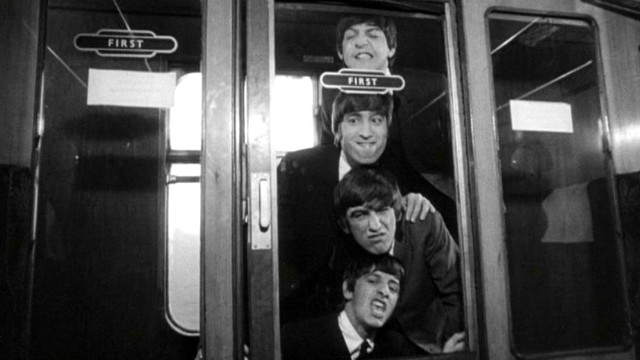How ‘A Hard Day’s Night’ Saved the Rock ‘n’ Roll Movie
 The uniquely discordant strum of a guitar introduces the now-iconic image of the Fab Four careening down a London-as-Liverpool street, chased by a horde of screaming young fans. George attempts to sneak a glance behind him, then loses his balance and careens to the ground, bringing poor Ringo down with him. John looks back to witness the instantaneous mayhem and continues running elated with laughter.
The uniquely discordant strum of a guitar introduces the now-iconic image of the Fab Four careening down a London-as-Liverpool street, chased by a horde of screaming young fans. George attempts to sneak a glance behind him, then loses his balance and careens to the ground, bringing poor Ringo down with him. John looks back to witness the instantaneous mayhem and continues running elated with laughter.
This wasn’t a moment of acting or planning or choreography, but a purely spontaneous interaction between members of the most famous band in the world captured on film. The contrivance of the scene produced a “mistake” which then inspired a genuine, unpremeditated moment between the bandmates, a real glimpse at John’s interaction with (and affection for) his colleagues outside the trappings of unprecedented fame and millions of dollars in royalties. Throughout A Hard Day’s Night, director Richard Lester toys with the obvious contrivances of filmmaking, a façade made ever more evident by the fact that this film was an out-and-out cash grab. The bandmates played themselves in quotation marks, taking the piss out of fame, rock ‘n’ roll, Mod chic, mass media, the British aristocracy, and ultimately themselves, a caricature that ironically helped distinguish The Beatles’ individual members for American audiences. The manic irreverence of Lester’s brand of comedy regularly broke cinematic rules of continuity and logic, making for a less anarchic kind of Breathless.
Source: Film School Rejects
Photo Credit: United Artists



